The rains and floods come and go in Florida. What’s left behind can ruin homes and lives
South Florida is feeling the storms and flooding this week. Come summer, dark clouds will bunch in the sky and dump torrents of rain regularly.
It doesn’t take much to flood our streets and, in extreme cases, even our homes and businesses.
In the Keys and in Southwest Florida, more than six months after Hurricane Ian, the water has receded but water damage remains.
That storm took lives and destroyed beachfront towns and a causeway, gutted homes, scattered boats. In many of the homes and businesses left standing, the receding floodwaters left behind a destructive and deadly reminder of just how hard it is to recover from a storm’s floodwaters:
Mold.
But it doesn’t take a hurricane to bring mold. Routine rain, and certainly this week’s blanketing, can bring it on, too.
South Florida’s spring and summer seasons, with their strong thunderstorms, can lead to serious damage. And mold can even set in after something as simple as a burst pipe or leaky roof — and constantly running your AC.
Mold can grow by feeding on the dust that collects on the blower, the wet cooling coil and on both sides of the ducts.
Mold crept into homes late September last year after Hurricane Ian swamped Key West, Naples, Sanibel and the Fort Myers area with historic levels of storm surge, up to 13 feet of water. The storm caused billions of dollars in damage across Florida.
And all that water left the kind of mold that continues to bring pain.
The story repeats itself every time there is a major storm. Hurricane Irma tore through the Keys in 2017, leaving thousands of homes destroyed or uninhabitable due to the fungi. In Louisiana, a state also frequently battered by hurricanes, thousands of mold-damaged homes sit empty after Hurricane Katrina in 2005.
In a hot and humid place like Florida, mold is an unwanted guest that thrives on surfaces like wallboard and wood with three things: moisture, warmth and an organic source of food. It festers 24 to 48 hours after water damage and continues to spread if it isn’t removed quickly.
And it’s not only buildings that suffer. Mold is hazardous to human health.
The fungi can cause asthma attacks, eye and skin irritation, and allergic reactions. It can even kill. Christian Childers, a 26-year-old father of two, died after toxic mold exposure after Ian.
Mold professionals like Alex LeBeau recommend homeowners hire a professional rather than try to fix things on their own.
“You may be releasing mold spores into the rest of the house,” LeBeau said. “That’s where not only the issue for additional growth comes in, but the potential for health impact.”
Bouncing back from Ian, with the festering mold, has been a nightmare amid an unstable and chaotic insurance market.
“We never had water like that down there,” said Beth Booker, whose mother’s Fort Myers Beach home was ravaged by Ian. “It’s really hard to see all of these memories that you thought you could hold on to to look back on forever ... destroyed.
These are three stories from Floridians struggling with mold damage.
KNOW MORE: A storm just flooded your Florida home? You may be at risk for mold sickness
A beach house in Southwest Florida
Carole McDanel, 78, decided to shelter through the storm inside her Fort Myers Beach home. She felt safe with her impact windows and shutters, and in 24 years, the house had withstood large hurricanes including Charley and Irma.
But this was different. This time, water seeped into her home. And it reached the top of her stairs.
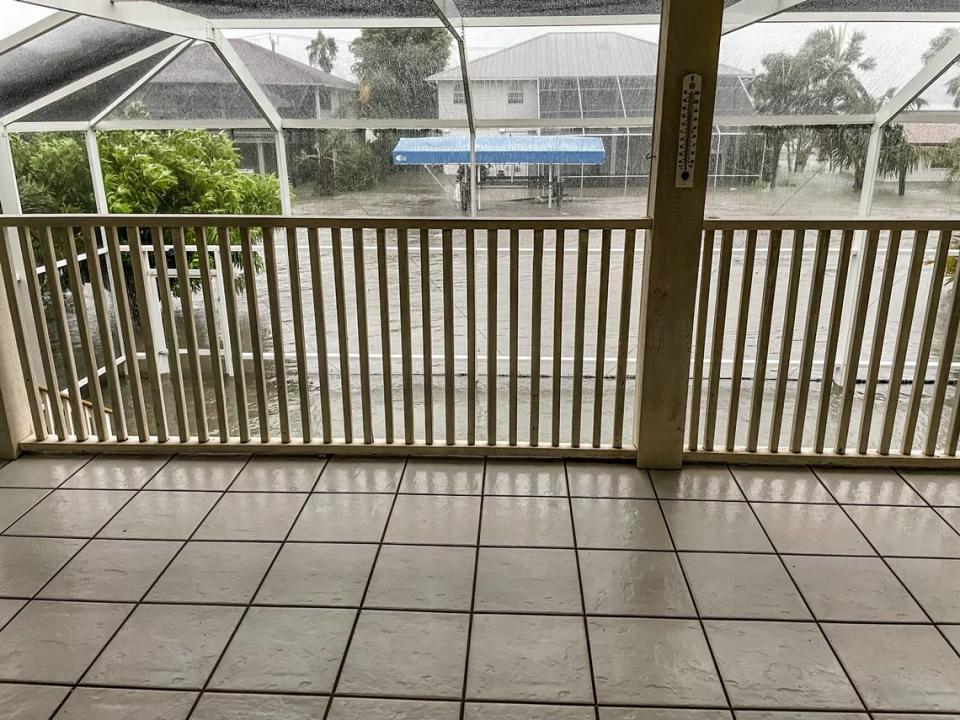
The day before the storm, Beth Booker, McDanel’s daughter, packed up family photo albums and tucked them into bins that she stored on the top shelves in the garage. When she returned after McDanel was rescued, the garage was flooded and decades of photos — some of McDanel’s parents — were ruined.
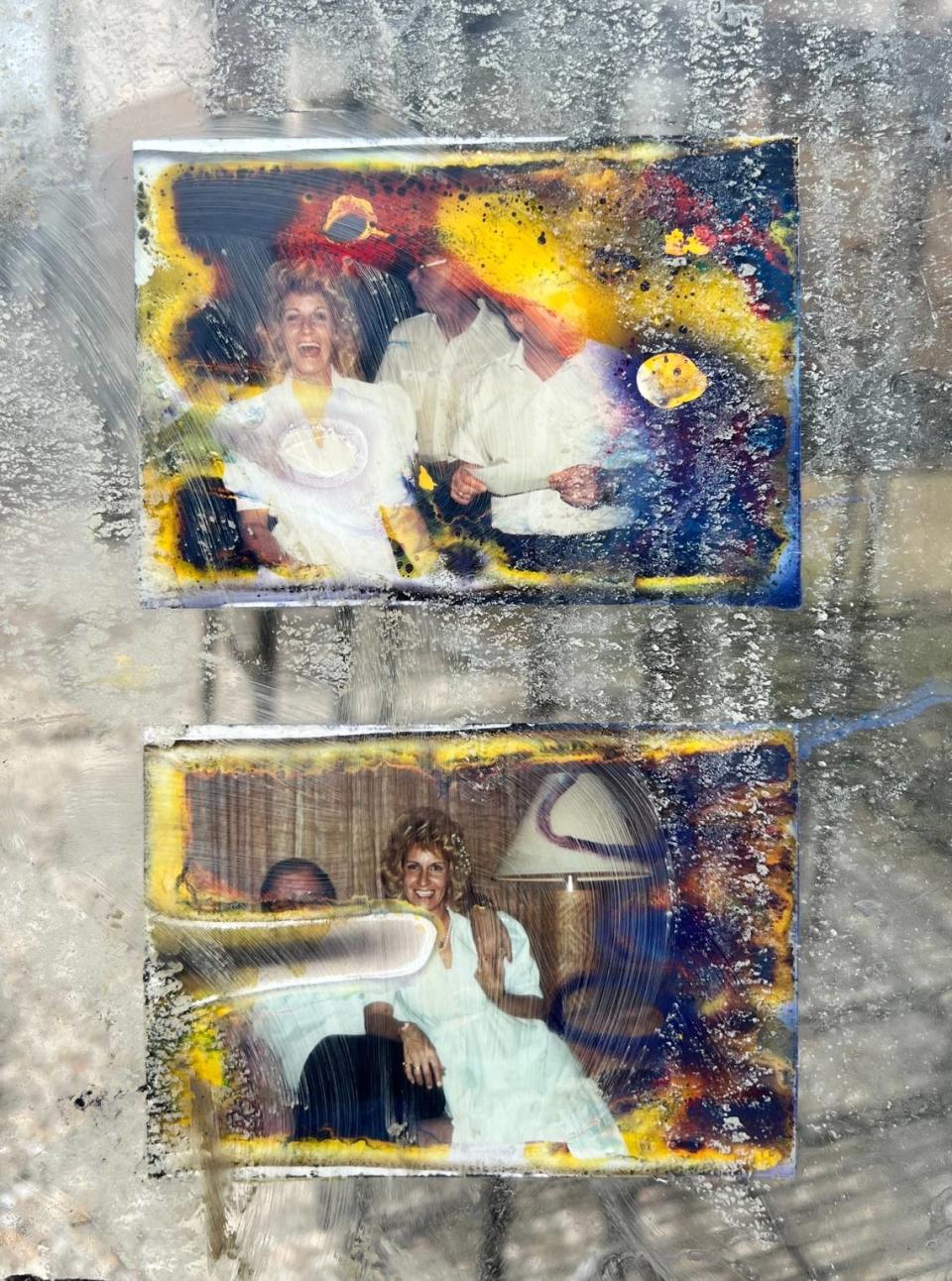
Ian wrecked McDanel’s home. It caused large cracks along the sides of the house, holes in the ceilings and shifting floorboards. It also ripped out the water heater and air-conditioning unit.
The house has sat empty for months. Now, mold is spreading.
Since the September storm, McDanel has been staying with Booker in Naples. She enjoys spending time with her grandchildren but grieves the loss of her beach house — and the potential of ever returning.
“It’s really traumatic,” Booker said. “Now, your only options are to ... let your home sit and have mold spread ... or you have to sell it.”
In her 35 years on the beach, McDanel had never submitted an insurance claim until Ian. The family contacted their insurance company and adjusters for help, but only got disappointing news in return. A contractor told them the sub-flooring could be replaced by cutting it out like puzzle pieces, but it wouldn’t stand up against a future storm. The best option would be to gut the house.
The maximum payout for the property loss is $250,000 — and even with the $67,000 McDanel was quoted for flood damage — she can’t cover a rebuild up to code, Booker said. They’ve since hired an insurance attorney.
“You really start to understand why like in emergency situations people set up ... GoFundMe,” Booker said.
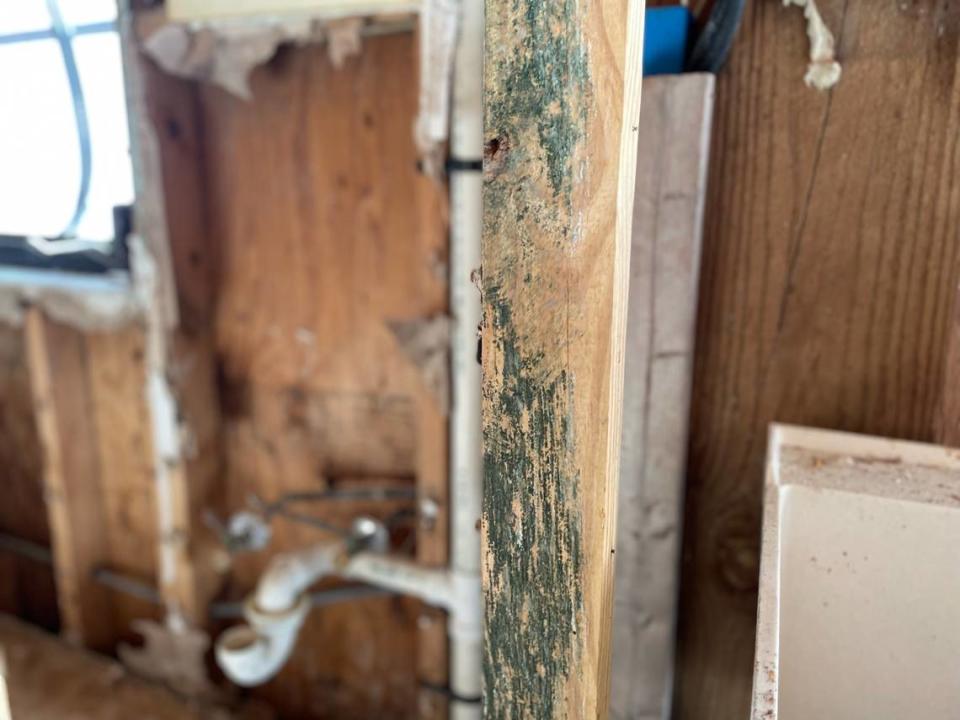
Seeing opportunity, real estate investors have been scooping up properties on the beach, a snub to many locals facing difficult, life-altering decisions.
“It’s really rubbing a lot of the people of Fort Myers Beach the wrong way because it feels like all these people who are locals are getting pushed out,” Booker said. “I’m genuinely just on edge to see what’s going to happen.”
A newly purchased house in Key West
Days after Hurricane Ian, Aaron Pearlman, 50, woke up to his one-story house swamped in seawater.
Pearlman and his girlfriend were forced to seek shelter at his neighbor’s house across the street.
“It came up through the floor, so it was panic mode, and we just hauled a--,” he told the Miami Herald in October.
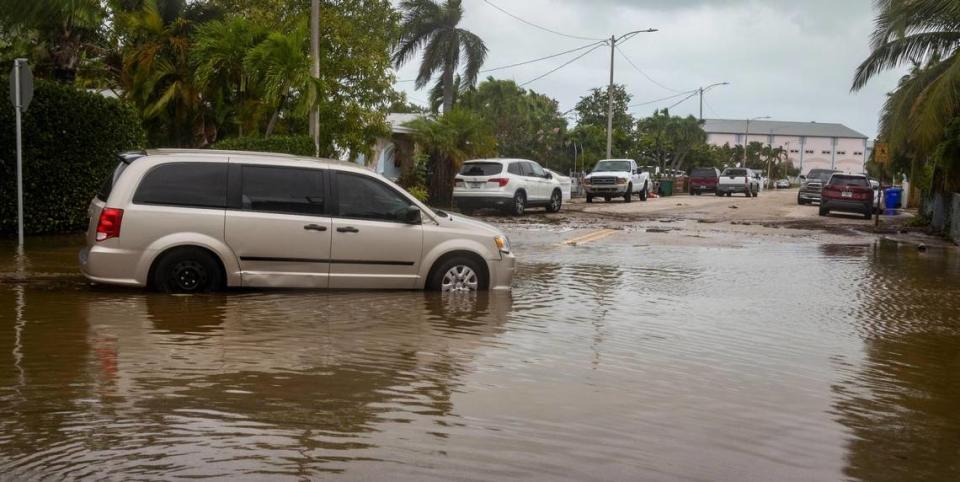
The water destroyed everything in the home up to about four feet, Pearlman said, including the floor that was so damaged it bubbled up.
The mold came a week or two later.
“There’s a lot of stories like this in Key West that are just not known about because of the rest of Florida, how devastated some of the other areas got,” he told the Miami Herald in February.
Pearlman hasn’t been able to live in the home that he purchased right before Ian.
Mold mitigation professionals cleared out the fungi. Now, Pearlman is awaiting construction to gut the house in damaged areas. He also wants to lift it, but is waiting approval.
Pearlman, now living with his in-laws in Key West, said dealing with insurers has been slow — though they’ve agreed to cover costs.
“We’re one of the lucky ones that can wait,” he said. “If I didn’t have somewhere to live, I’d probably be speaking a different tune.”
He salvaged his clothing but had to toss furniture and electronics.
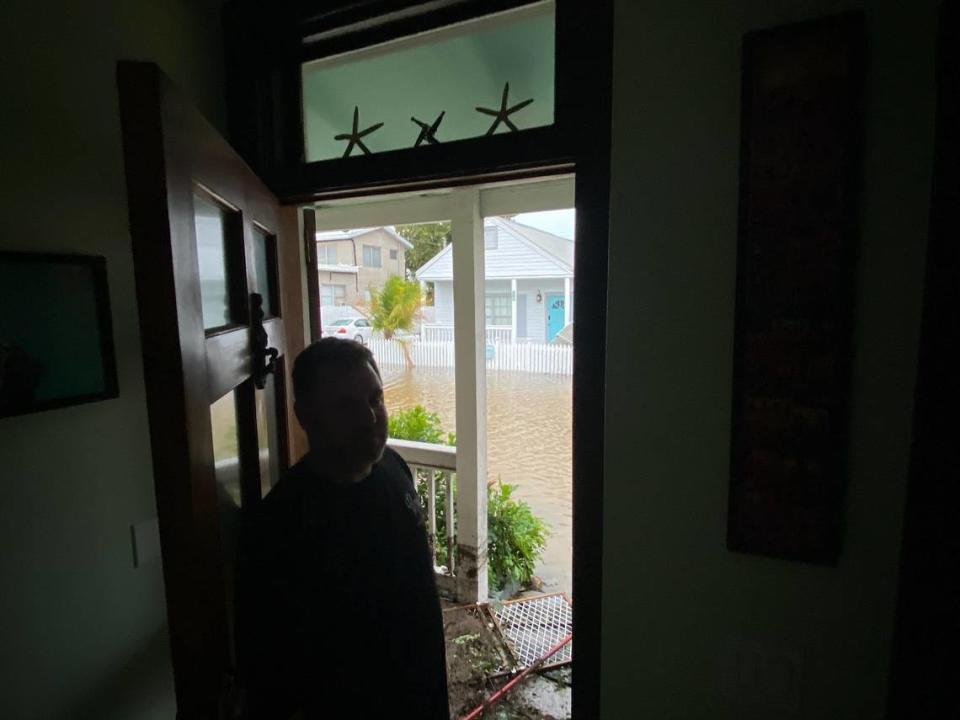
Some losses stung more than others. Pearlman couldn’t save photos, mementos and family heirlooms he had stored in a lock box.
“If we knew it was going to be as bad as it was,” he said, “we probably would have lifted everything because that’s what we did for Irma.”
A tiny home in West Florida
After getting sick 10 years ago, Jessica Dobbins became interested in tiny living. She gets the freedom to travel and enjoy her life with less stress.
Dobbins, 43, quit running her businesses last year, and invested time on renting her tiny homes through Airbnb. Months later, Hurricane Ian zipped through, diverting her retirement plans.
“This is a freakin’ nightmare,” she said in a YouTube video as she tore out flooring.
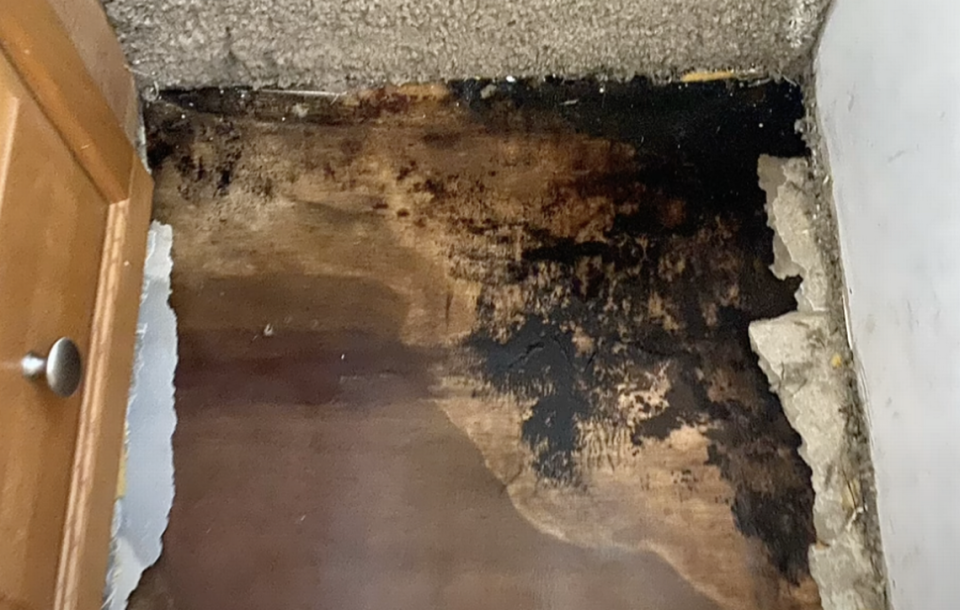
Dobbins has been documenting her tiny home journey on her YouTube channel “Florida Chicks Tiny Adventures” for two years. She frequently posted videos about her three solar-powered tiny dwellings: a floating home on Captiva, a micro home in North Port and a camper in Arcadia.
Ian destroyed the floating home and damaged the micro home, which she plans to fix in the future. Dobbins used to bounce around the three properties and began living in her camper after the hurricane.
Weeks after the storm, Dobbins noticed that the camper’s seams had shifted. She later fell ill and recognized her symptoms.
When she pulled out the flooring, she uncovered mold.
“It was just kind of disheartening because it’s like, OK, now where am I going to go?” she told the Miami Herald.
She was chipping away at the repairs while staying on a bus she is renovating. Earlier this year, FEMA provided her with an apartment in Sarasota, an hour from her property.
Dobbins fixed the leaks and thoroughly cleaned the camper’s floor by soaking it in bleach for several days. She then ran an ozone machine to prevent the mold from growing, and dehumidifiers to dry everything out.
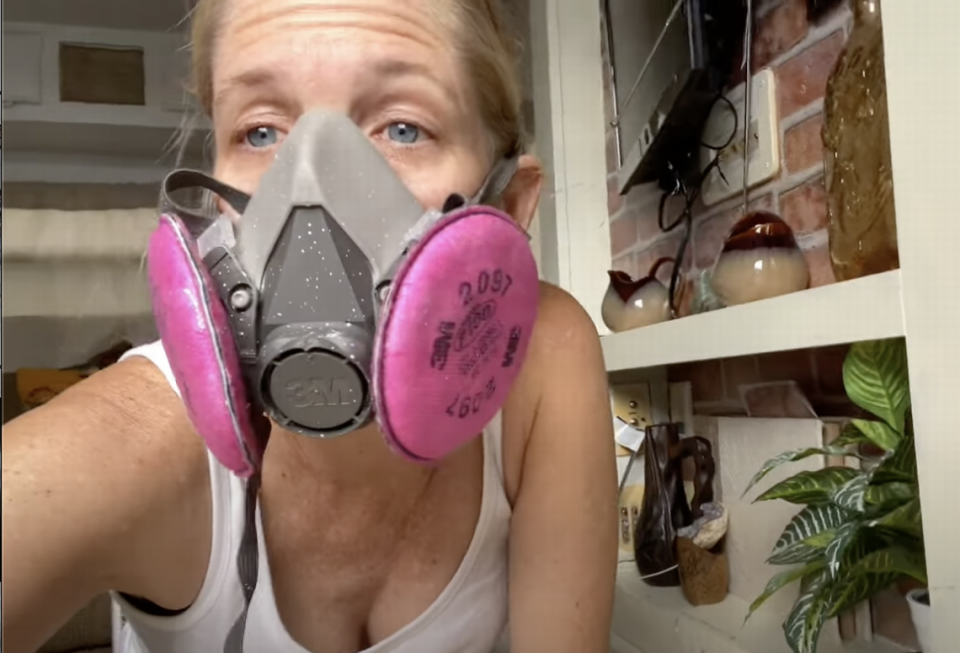
She’s now putting in new flooring to piece her camper back together — and rent it out.
“It took a little while because I was so focused on other things that were going on from the storm,” Dobbins said. “At first, it was just survival mode. For the first four weeks, you’re not really focusing on how am I going to repair this or that.”
Having lost her rental income, Dobbins said she couldn’t afford to hire someone to do the repairs. She took the situation into her own hands, falling back on her DIY skills.
“Luckily, I have been doing this before the storm came around,” she said. “Setting my life up so if something like this was to happen I would be OK.”

